Overview
The F450-4B Raspberry Pi Drone is an advanced DIY Drone Kit that combines a powerful Raspberry Pi 4B onboard computer with the versatile Pixhawk 2.4.8 flight controller, making it a highly customizable and programmable drone platform. This Open-source Drone Platform supports cutting-edge tools like Dronekit-python, enabling developers to create autonomous missions, real-time data transmission, and AI-powered image processing applications. With a robust 450mm frame, a 200MP HD camera, a 3S 5200mAh battery for up to 20 minutes of flight, and advanced flight modes like altitude hold, return-to-home, and circle mode, the F450 Drone Kit is the ideal choice for enthusiasts, researchers, and educators seeking an innovative drone development experience.
Key Features
High-Performance Hardware
- Raspberry Pi 4B: Powered by a 64-bit 1.5GHz quad-core processor, supporting 4K video output and high-speed WiFi communication for reliable operation.
- Pixhawk 2.4.8 Flight Controller: Equipped with multiple integrated sensors, ensuring precise attitude control, hovering, and mission planning.
- Vision Expansion Support: Paired with a monocular camera and OpenCV tools, this kit meets real-time image transmission and processing needs.
Diverse Flight Modes
- Altitude Hold (AltHold): Maintains a stable flight altitude.
- Hover: Provides precise stationary hovering.
- Return to Home (Return): Automatically returns to the starting point during signal loss or low battery.
- Landing (Land): Executes smooth autonomous landing.
- Stabilization Mode: Adjusts flight attitude automatically.
- Circle Mode: Performs circular flights around a target.
- Headless Mode: Removes directional constraints for easier control.
- Out of Control Return: Returns to a preset location when the signal is lost.
- Low Power Landing: Safely lands during low battery conditions.
Data Transmission and Image Processing
- Establishes a local WiFi network through a built-in hotspot without requiring external routers, enabling real-time data and image transmission.
- Supports OpenCV-based video streaming and analysis, ideal for image monitoring and intelligent applications.
Specifications
Drone Parameters
| Parameter | Details |
|---|---|
| Name | F450 Drone Kit |
| Wheelbase | 450mm |
| Weight | 1493g (with battery and Raspberry Pi 4B) |
| Flight Controller | Pixhawk 2.4.8 open-source flight controller |
| Onboard Computer | Raspberry Pi 4B |
| Camera | 200MP HD 1080P |
| Hovering Support | Optical flow module and laser distance sensor |
| GPS Module | m8n GPS |
| Flight Time | ~20 minutes (depending on environment and mission) |
| Battery | 3S 5200mAh (11.1V) |
| Payload Capacity | 500g |
| Wind Resistance | Level 3-4 |
| Motor | SunnySky A2212 |
| ESC | Hobbywing 20A ESC (supports 3S-4S LiPo batteries) |
| Propellers | T1045 self-locking propellers |
| Max Altitude | 2000m (interference-free) |
| Flight Range | 1000m |
| Flight Scenarios | Indoor / Outdoor |
Pixhawk 2.4.8 Flight Controller Specifications
- Processor: 32-bit ARM STM32F427 Cortex M4, 168MHz, 256KB RAM
-
Sensors:
- L3GD20 3-axis 6DOF gyroscope
- LSM303D 3-axis 14-bit accelerometer/magnetometer
- MPU6000 6-axis accelerometer/magnetometer
- MS5611 high-precision barometer
- Ground Control Compatibility: QGroundControl, MissionPlanner
- Dimensions: 81mm x 47mm x 16mm; Weight: 37g
Raspberry Pi 4B Specifications
- Chipset: Broadcom BCM2711
- CPU: 64-bit 1.5GHz quad-core
- GPU: 500MHz VideoCore VI
- RAM: 4GB DDR4
- Interfaces: 2 x USB 3.0, 2 x USB 2.0
- Video Output: Dual micro HDMI ports, supports 4K@60Hz
- Communication: Bluetooth 5.0, WiFi 5 (2.4/5GHz)
- Power Supply: USB Type-C (5V 3A)
Package Includes
Configuration 1: SunnySky A2212 Motor with FlySky i6 Remote and Telemetry
- F450 frame with landing gear
- SunnySky A2212 motors (4 pcs)
- Hobbywing 20A ESCs (4 pcs)
- T1045 self-locking propellers (4 pairs)
- PIX M8n GPS module
- Vibration-damping plate
- FlySky i6 remote controller
- 3S 5200mAh battery
- B3 balance charger
- GPS mount
- FS voltage telemetry module

Included: Battery straps, nylon cable ties, wooden pads, 3M adhesive tape, buzzer, installation tools
Assembly and debugging videos, related materials provided; contact customer service for source code.
Configuration 2: SunnySky A2212 Motor with Radiolink PRO
- F450 frame with landing gear
- SunnySky A2212 motors (4 pcs)
- Hobbywing 20A ESCs (4 pcs)
- 9450 self-locking propellers (3 pairs)
- PIX. M8n GPS module kit
- Vibration-damping plate
- Radiolink PRO (R9DS receiver)
- 3S 2200mAh control battery
- 3S 5200mAh battery
- B3 balance charger
- GPS mount

Included: Battery straps, nylon cable ties, wooden pads, 3M adhesive tape, buzzer, installation tools
Assembly and debugging videos, related materials provided; contact customer service for source code.
F450 Drone Kit Assembly
Application Scenarios
The F450-4B Drone Development Kit is ideal for:
- Drone R&D: University research, flight controller testing, algorithm development.
- Intelligent Applications: Path planning, target recognition, and obstacle avoidance.
- Educational Experiments: Programming, hardware assembly, and debugging.
- Field Use: Indoor hovering, outdoor surveying, agricultural monitoring, and more.
Details
F450-4B Raspberry Pi Drone Development Platform
The F450 is a classic and commonly used drone model, offering simple and convenient assembly, high cost performance, strong practicality, and suitability for beginners to quickly get started with drone operations.
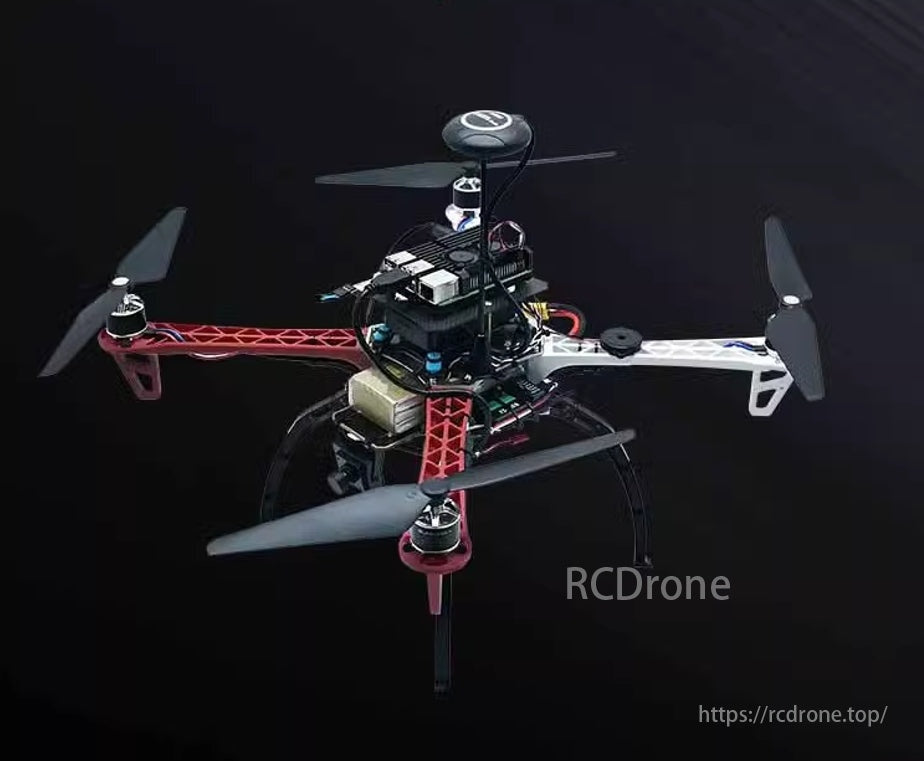
Upgraded Raspberry Pi 4B
The Raspberry Pi 4B hardware processing power is significantly stronger than the 3B+.
The Raspberry Pi is equipped with the latest open-source system Ubuntu 20.04, offering a smoother experience compared to the Ubuntu Mate system.
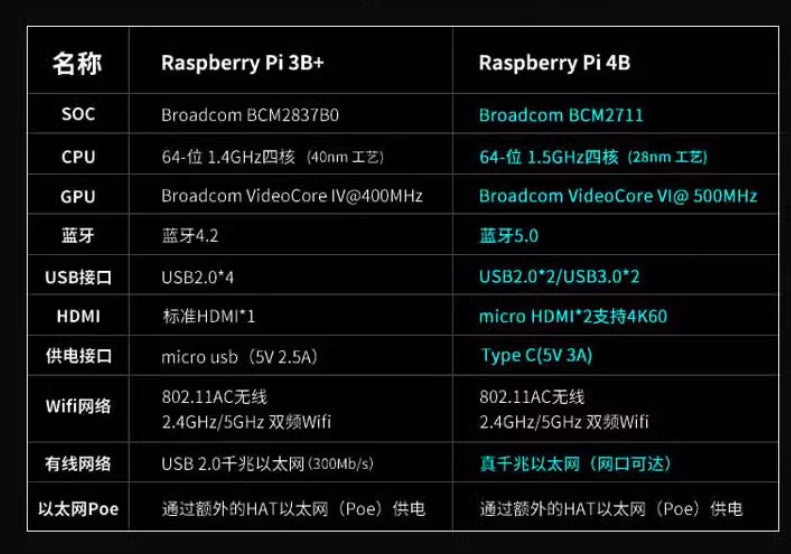
System Enabled WiFi Hotspot (Acopter)
Using the WiFi capability of the Raspberry Pi 4B, a self-built hotspot (Acopter) is created. The PC can directly connect to the 4B’s WiFi hotspot to form a local network and use SSH commands for remote access to the Raspberry Pi. Unlike the 3B+ model that requires a router for network configuration, this setup is much simpler and more user-friendly for beginners.
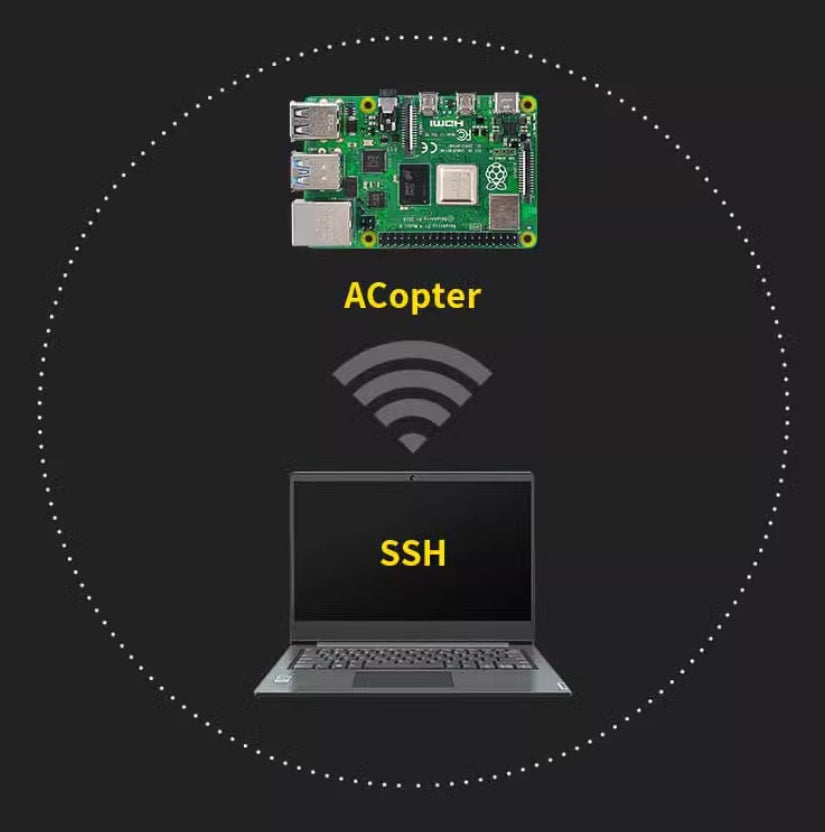
OpenCV Visual Processing
A monocular camera is added, enabling image transmission and post-processing. Video streams can be captured via the Raspberry Pi and processed using tools like OpenCV. Real-time HD video streams can also be transmitted back to a PC for processing or to a mobile device for viewing.
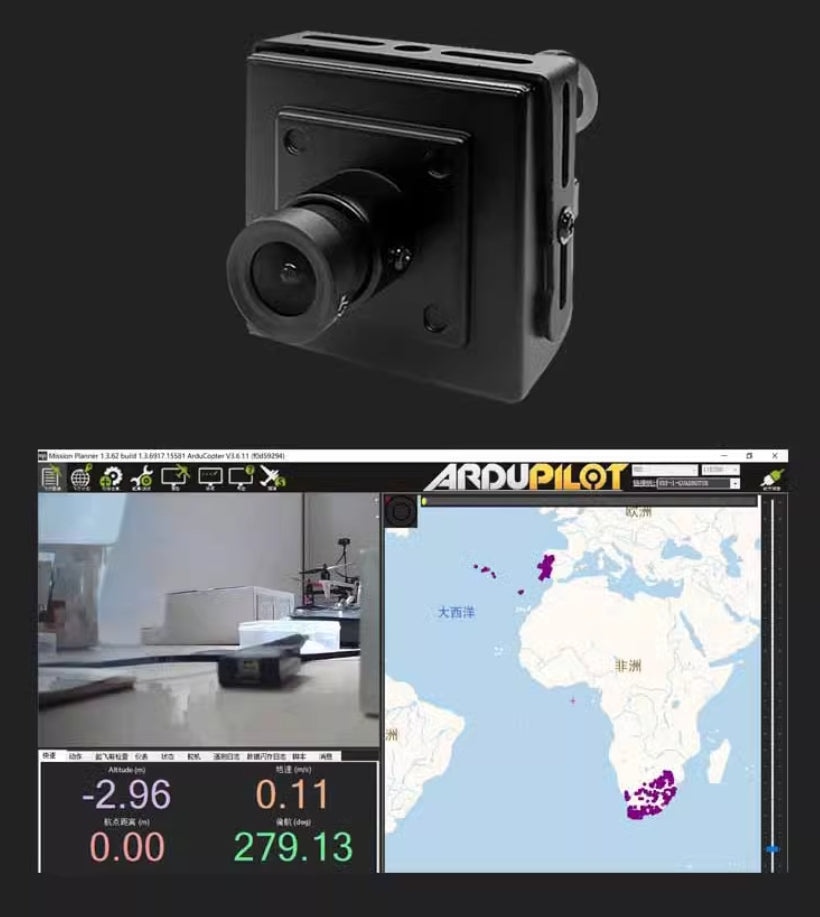
More Expansion Interface
The Raspberry Pi 4B offers a wide range of expansion interfaces, including dual USB 3.0 ports, dual 4K micro HDMI ports, CSI and DSI interfaces, gigabit Ethernet, and a Type-C power supply, providing exceptional versatility for various applications.
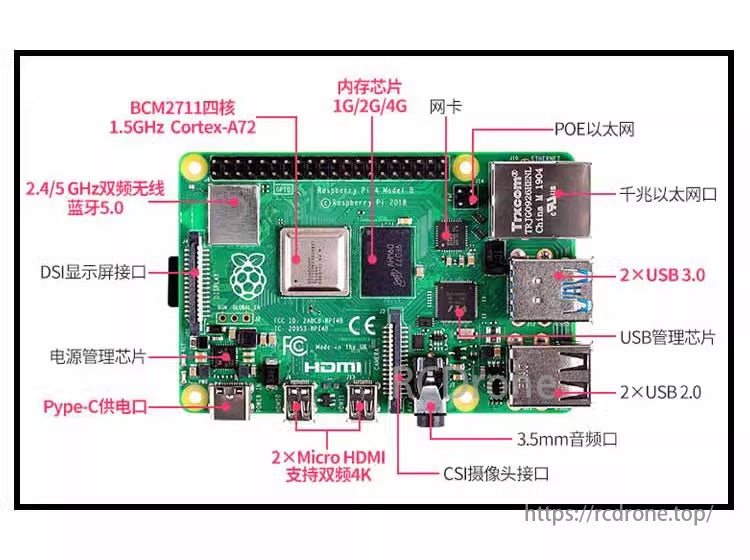
Single Camera Edition
The single camera edition includes a Raspberry Pi 4B and a monocular camera, enabling communication via a serial port with the flight controller. It supports tasks such as visual processing, Python programming, and communication. This version is suitable for users with prior experience using Pixhawk, basic knowledge of Ubuntu (Linux), OpenCV, Raspberry Pi, and local area network communication.
In addition to the basic features, the single camera edition supports image and data transmission over WiFi and allows control of the drone through Dronekit-python programming.
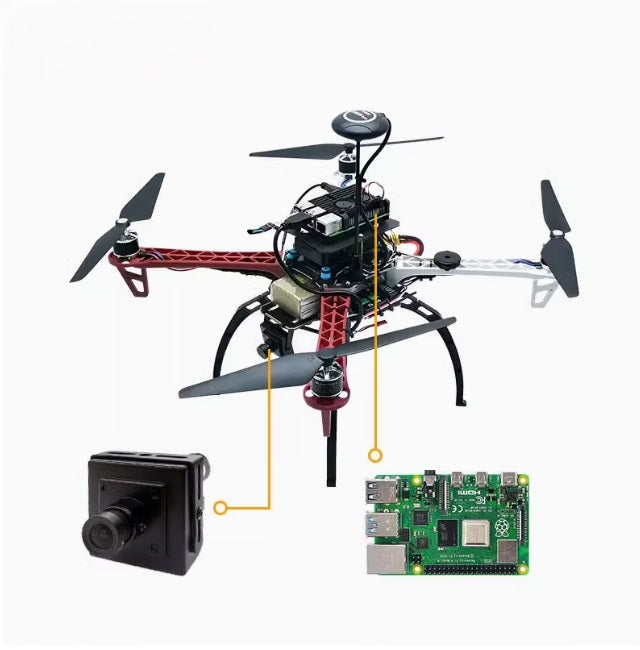
Optical Flow Positioning
Indoor Hovering Control with Dronekit-python Under Optical Flow Positioning Conditions
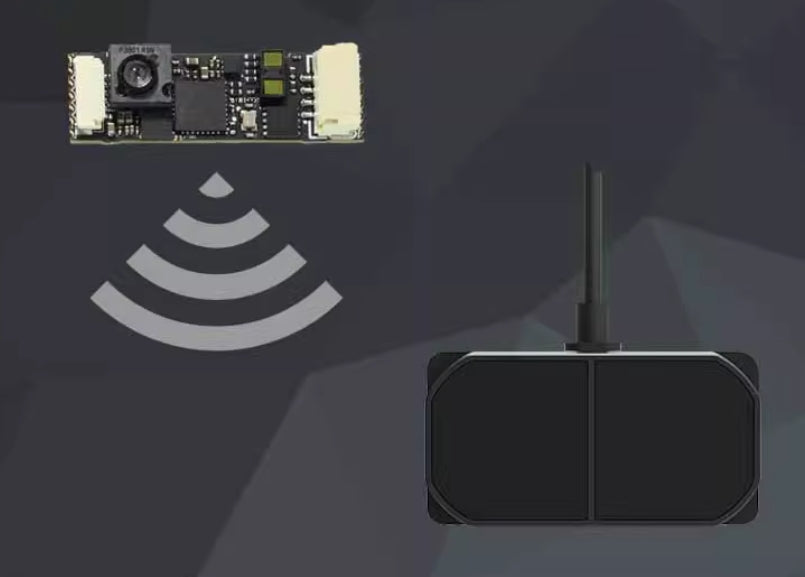
This drone development platform supports ROS, Python programming, OpenCV image recognition, 4G long-distance transmission, and Aruco 2D code visual guided landing, making it highly versatile and innovative.

FlySky i6 Remote Controller
Equipped with an ia6b receiver preloaded with 10-channel firmware, voltage telemetry module, and a remote control range of over 1000m, ideal for beginners to learn and practice.

Radiolink AT9S Remote Controller
Features 10 channels with a control range of over 2000m. Equipped with a telemetry module that provides data on battery voltage, GPS satellite count, flight altitude, coordinates, flight mode, and more.

FAQ
1. Can I perform secondary development? Can I program independently?
The answer is yes. As previously introduced, Ardupilot is currently the most widely used open-source flight control system, and many excellent domestic and international drone models are developed based on this system.
Secondary development mainly has two directions: flight control development and external expansion.
-
Flight Control Development
We use Ardupilot, so learning open-source flight control development primarily involves studying the Ardupilot open-source project.
- Strong programming skills are required (the source code is in C++), along with knowledge of advanced mathematics (discrete math, iteration, linearization), Kalman filtering, and embedded development.
- A solid theoretical foundation is needed. This prepares you for working on unmanned systems development and flight control R&D.
If you want to focus on flight control development, most of the work needs to be done on your computer:
- Setting up the programming environment, downloading the flight control source code, studying its architecture and functional modules, etc.
- Once familiar with the code framework, you can begin programming based on the existing code.
Start with a basic flight control model and refer to the Ardupilot flight control textbook we provide for guidance.
-
External Expansion Development
External expansion allows you to add external devices based on your tasks and scenarios through the reserved interfaces of the flight controller. For example:
- Add an optical flow module for indoor positioning and hovering.
- Add a laser radar for obstacle avoidance.
- Use telemetry to enable autonomous flight and route planning.
- Install an onboard computer (e.g., Raspberry Pi) and use Dronekit-Python or ROS to program for controlling the drone.
The goal of adding an onboard computer is to handle more complex tasks, such as:
- Using the Raspberry Pi camera for visual recognition (requires OpenCV, YOLO, etc.).
- Combining communication protocols to control the drone's flight.
- Transmitting flight data or high-definition videos via networks.
These functions cannot be achieved solely by relying on the flight controller.
Studying external expansion focuses mainly on applications, which is also the direction of most competitions nationwide. After learning, you can explore critical areas of intelligent drones, such as visual recognition, AI integration with drones, and more.
2. What are the prerequisites for independent development?
Learning about drones is a gradual process. Drone systems are interdisciplinary and integrative, involving a broad range of knowledge areas. To learn drone development, the following foundations are required:
- Basic hands-on skills, including proficiency in using soldering irons, various screwdrivers, and other tools.
- Basic knowledge of electronics: concepts such as voltage, current, power, polarity, and signals.
- Fundamental knowledge of automation control: PID control, feedback, digital signals, analog signals, etc.
- Basic computer skills: drivers, serial ports, baud rates, firmware versions, software versions.
- Basic knowledge of Pixhawk drones.
- Basic knowledge of the Ubuntu operating system.
- Programming language proficiency: such as C++ and Python.
How To Make Respberry PI Drone?
Related Collections
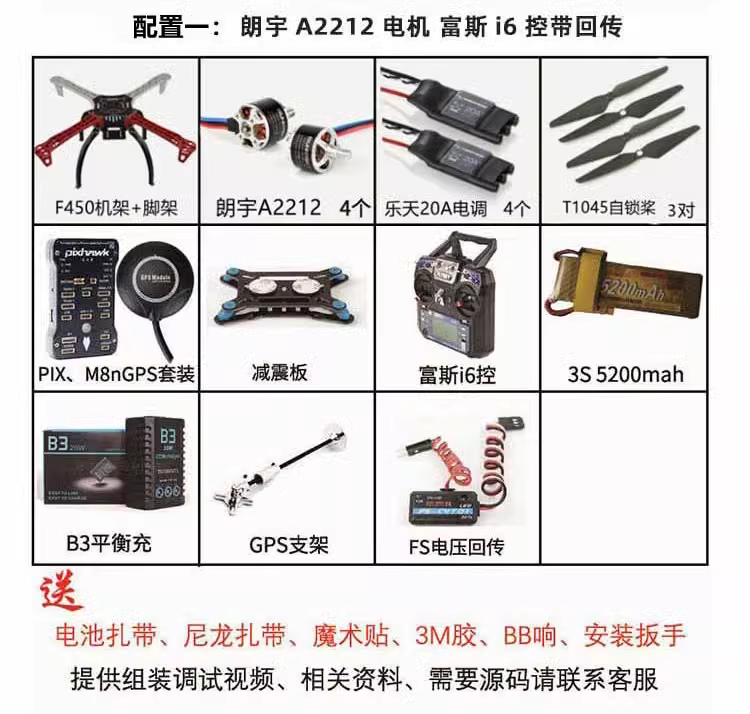

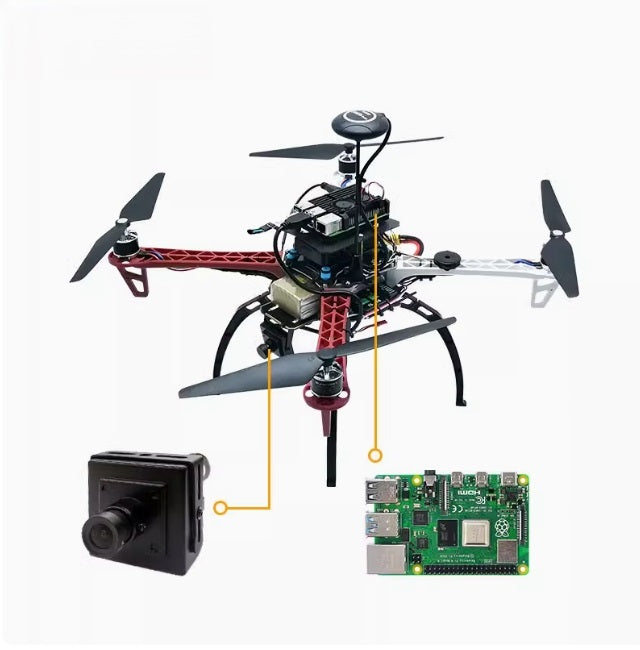

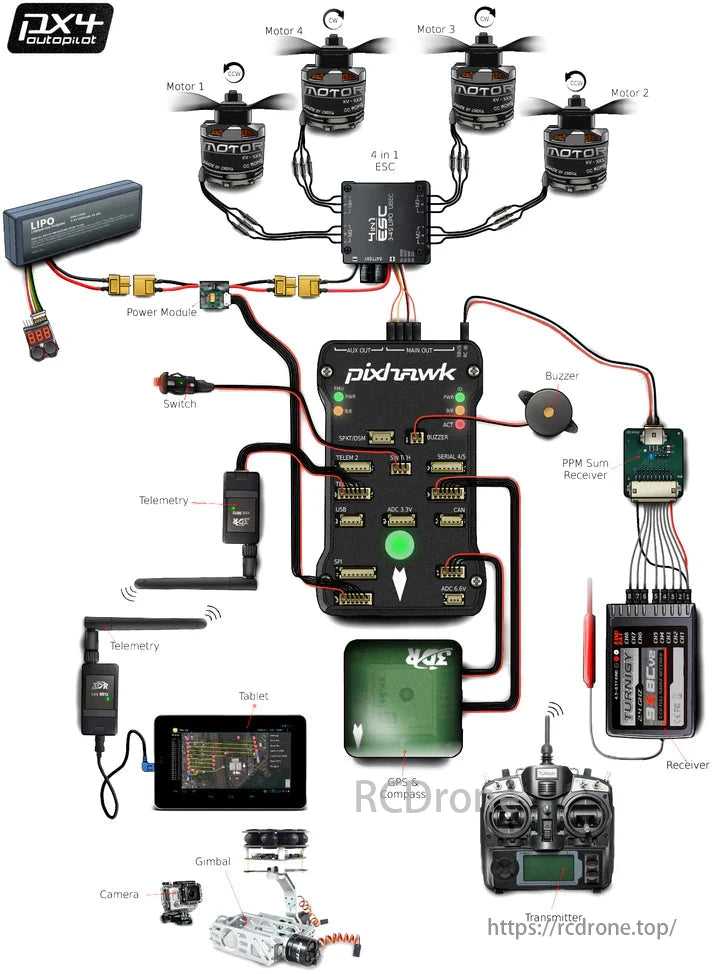
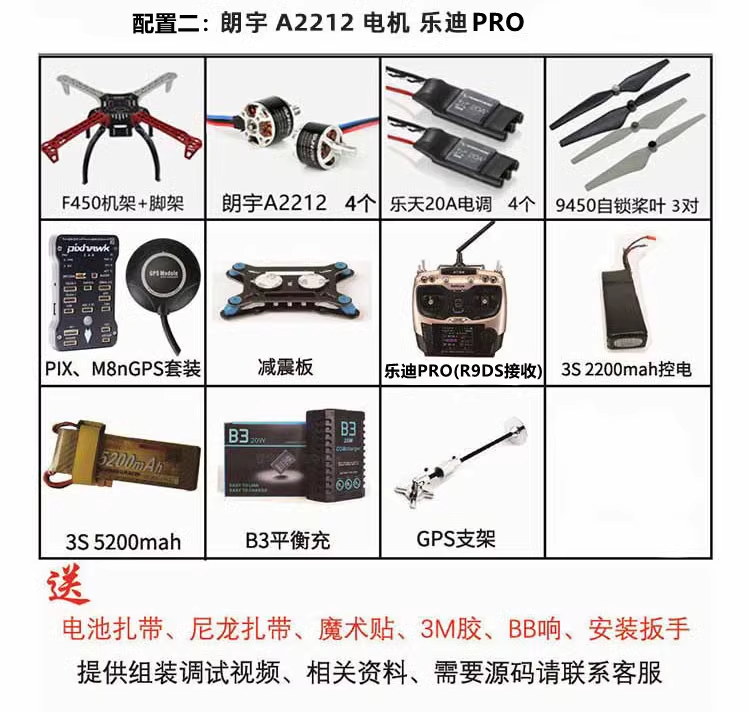

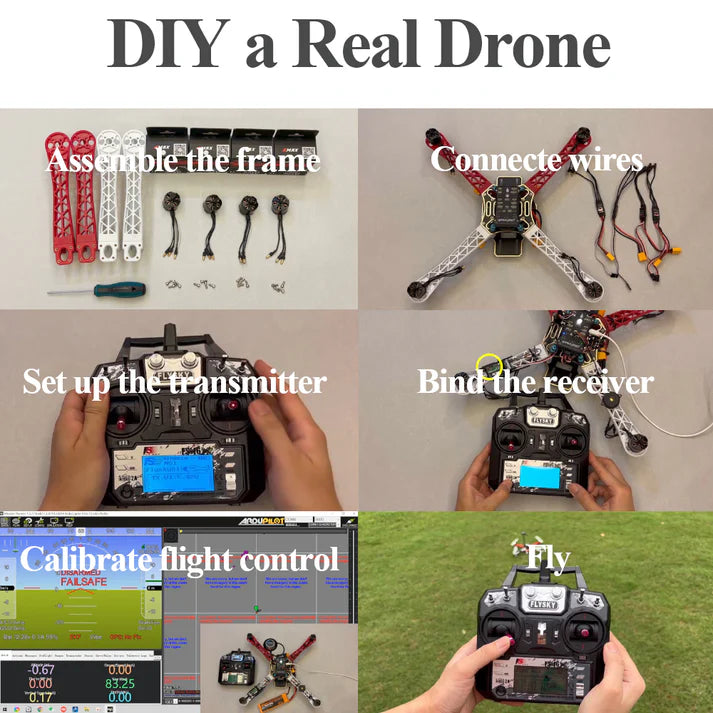
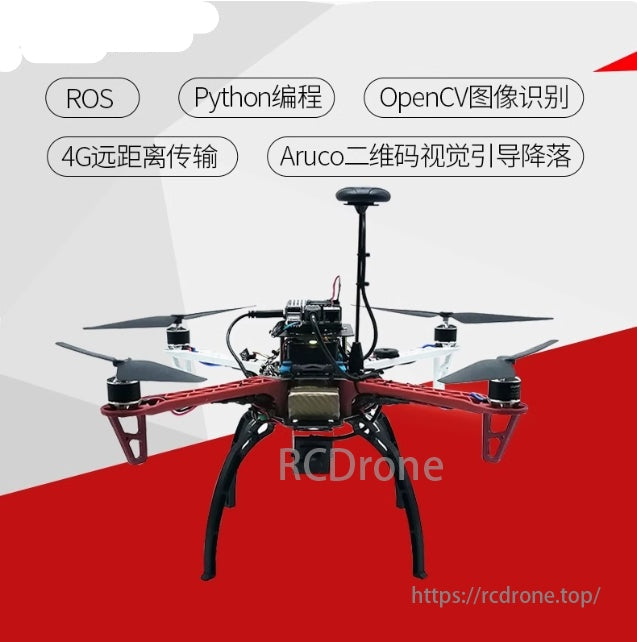
Explore More Drones & Accessories
-

Camera Drone
Our Camera Drone Collection features a wide range of brands including FIMI,...
-
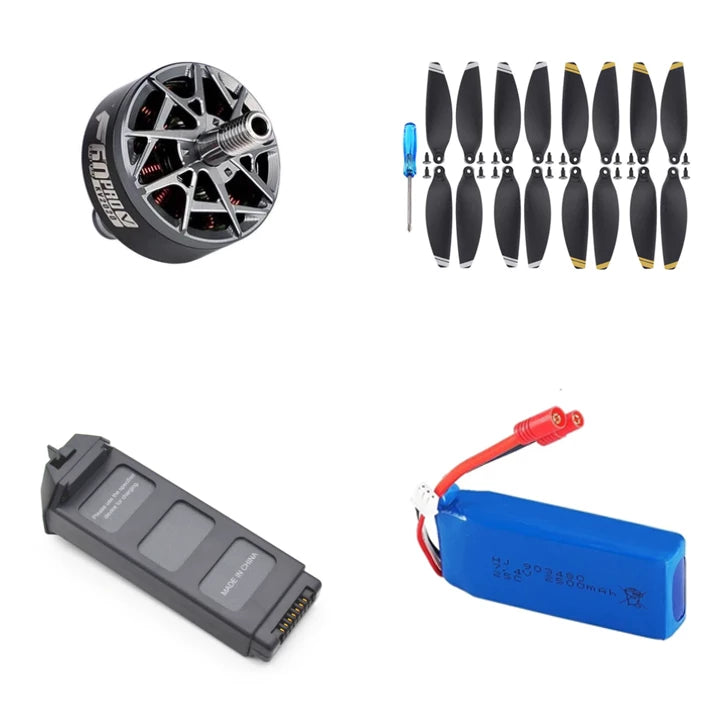
Drone Accessories
Discover a wide range of drone accessories to enhance flight performance, extend...










